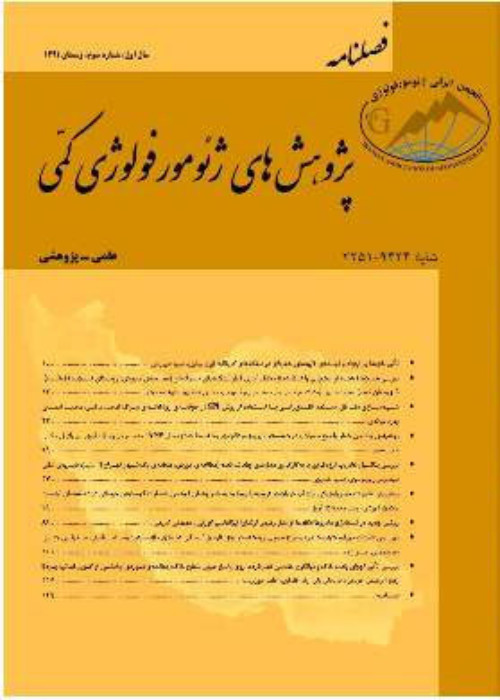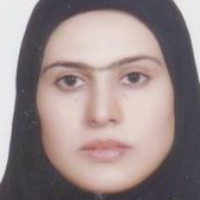Estimation of Talesh fault activity in Gilan Province by morphotectonic and seismotectonic achievements
Iran is located on the seismic belt of the Alps-Himalayas and with specific geological settings, is one of the countries that generally face the event of earthquake. Earthquake occurrence is considered as one of the most destructive and harmful phenomena in any country. Occurrence of any earthquake is a special and important event that by understanding its various dimensions and identifying the seismic potential of an area, appropriate immunization methods can be adopted to deal with this natural phenomenon. Examining the seismic hazard of Iran, which is one of the ten seismic countries in the world, is the most important to encounter with that event. Occurrence of an earthquake is a sign of the existence of neo-tectonic activities. Talesh region, located in the west of Gilan province, has been active region in point of seismicity and several earthquakes have occurred so far.
In this research, first, the geological map of the area was drawn. The lines and fractures of the target area have been extracted using remote sensing methods. For this purpose, using the five-band image of Landsat 8 satellites, in the Geometica software, the lines are extracted and the density map of the lines is prepared, then the extracted lines are entered into the Rockwork software and drown Rose diagram.The seismic data used in the region are instrumental data. Due to the importance of this data in conducting seismic studies and hazard analysis, catalogs of various instrumental seismic databases such as: IIEES, ISC, USGS and the Institute of Geophysics, University of Tehran were used. Each earthquake in this database contains details about the source, such as: date, time, latitude, longitude, and related seismic information. To study instrumental earthquakes, after collecting data and modifying and editing them, various diagrams were drawn for statistical analysis. In order to study the focal depth of systemic earthquakes, a graph is drawn related the depth of all earthquakes to determine the depth or absence of earthquakes at what depth. The magnitude-year and magnitude-depth graphs are used to determine at what years and at what depths the largest earthquakes occurred, respectively.
In the study area, we used various morphotectonic indices and also seismotectonic analysis for determination of rate of activity of Talesh fault and seismic hazards to encounter that.The numerical value of the hypsometric integral for 9 basins within the Talesh fault was calculated. The numerical value of the hypsometric integral and the shape of the hypsometric diagrams of the basins show that basins one, four and seven are in themiddle stage of maturity and are relatively mature, and basins two, three, six and eight are mature basins with erosion. They show high maturity.Considering the amount of elongation of the basins with tectonic activity, it can be concluded that, in the basins where the Re and Bs curves are separated from each other, it indicates the active areas and the basins where this curve are closer and get to each other, indicates the less activity. Basins one, five, seven and nine can be considered elongated basins with high tectonic activity and basins three and eight can also be considered as round basins with low tectonic activity. Among these, basins two, four and six are also introduced as relatively active basins.The most basins of the area have a Vf value of less than one, or close to one, which indicates the vertical digging of waterways in the basins and the low amount of erosion in the basins. Among these, basins two, four, five and seven are active basins and other basins are relatively active.Values greater than 50 for asymmetry, indicate an elevation to the right of the basin and values less than 50 indicate an elevation to the left of the main drainage. Thus, basins two, five, and seven uplifts to the right of the basin, and basins one, four, six, and nine rise to the left.According to diagram, the amount of linearity in basins six, seven, eight and nine is more than other basins. Meanwhile, basins one, four and five have more mazes in the mountain front, which indicates less activity of tectonic factors, including the activity of Talesh fault. Basins two and three can also be considered relatively active basins.
Examination of morphometric indices in the basins of the study area shows that the amount of tectonic activity along the Talesh fault is not the same and constant. Some indicators evaluate the northern regions of Talesh fault as active areas and others more active in the southern parts, but the number of indicators that refer to the southern parts is more. Among these, Vf, Smf, AF, SL, Re, Bs indices show more activity in the southern basins of Talesh fault. Finally, the study area can be considered as active areas in view of tectonic activity.The probability of an event for earthquakes of less than 3.5 magnitude in 1 year is 99.99%. In 50 years, earthquakes with a magnitude of less than 2.4 Richter occur 99.99%. Earthquakes with a magnitude of less than 7.4 on the Richter scale and earthquakes with a magnitude of less than 7.5 on the Richter scale have a 99.99% probability of occurring in 100 years.The seismicity coefficient of the region is equal to 3.73 and the b-value which is the structural geology coefficient of the region is equal to 0.594. This means that normally the number of earthquakes in the region will be high and the magnitude of earthquakes will be low.Calculations of the maximum possible acceleration of faults in the study area show that Talesh fault with an approximate length of 82 km and less than 7 km from the center of the study area, has the highest horizontal acceleration of 0.63 m/s2.
Morphotectonics , Seismotectonics , Fault , Talesh , Gilan
- حق عضویت دریافتی صرف حمایت از نشریات عضو و نگهداری، تکمیل و توسعه مگیران میشود.
- پرداخت حق اشتراک و دانلود مقالات اجازه بازنشر آن در سایر رسانههای چاپی و دیجیتال را به کاربر نمیدهد.



